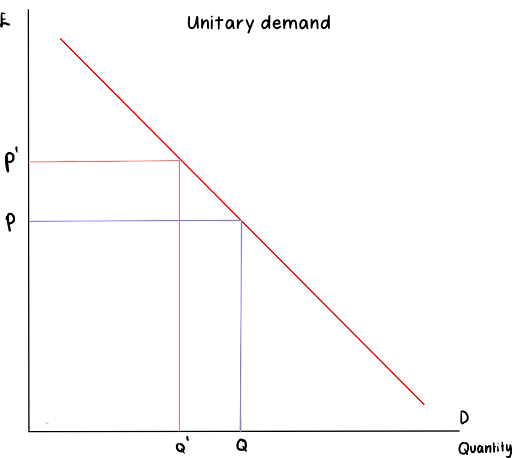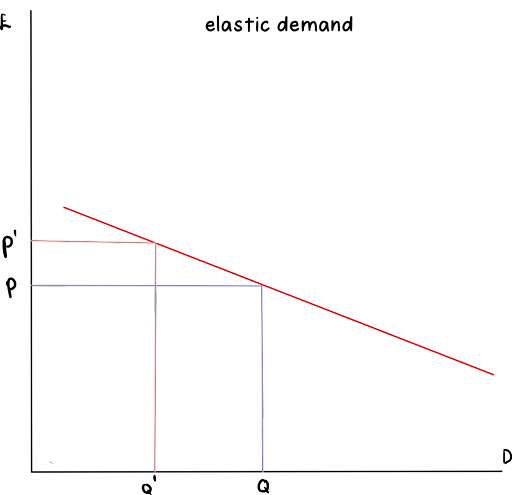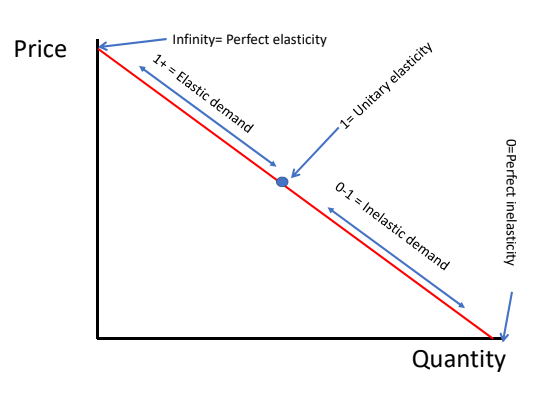4a. Price elasticity of demand
Price elasticity of demand (PED) measures the responsiveness of demand to a change in price.
How to calculate PED -
There are 2 ways to calculate PED depending on the information you are given If you are given numbers you use
PED = P/Q * ΔQ/ΔP
Quantity demanded is originally 100 at a price of £2. Prices rise to £3 resulting in a fall in demand to 75. Therefore:
PED = 2/100 * 25/1
PED = 0.02 *25 = 0.5
If you are given percentages you use:
PED = %ΔQ / %ΔP
Quantity demanded falls by 20% because prices have risen by 5%
PED = 20% / 5% = 4
Types of elasticity
There are only 5 types -
0 = Perfect inelasticity - This is an extreme case where a change in price does not affect the demand for a good or service at all. Charge 50p or £200 the demand remains the same.
0-1 = Inelastic demand - When there is inelastic demand the market is insensitive to changes in price. Changes in demand are relatively smaller than changes in price

1 = Unitary elasticity - At this point, a change in price is reflected by a change in demand which is exactly the same. Therefore a 5% increase in price means a 5% decrease in demand. A 10% decrease in price means a 10% increase in demand.

1+ = Elastic demand - Elastic demand means that the market is sensitive to a change in price. When a price is changed, the change in demand is relatively higher.

Infinity = Perfect elasticity - This is an extreme case where the tiniest change in price will have a huge effect on the demand for a good or service. Increasing the price by 1p might mean a huge decrease in demand

Inelastic goods -
They have few or no close substitutes, e.g. petrol, and cigarettes.
They are necessities, e.g. if you have a car, you need to keep buying petrol, even if the price of petrol increases
They are addictive, e.g. cigarettes.
They cost a small % of income or are bought infrequently.
In the short term, demand is usually more inelastic because it takes time to find alternatives
If the price of chocolate increased, demand would be inelastic because there are no alternatives, however, if the price of Mars increased there are close substitutes in the form of other chocolate, therefore, demand will be more elastic.
Elastic goods -
Goods that are elastic, tend to have some or all of the following characteristics:
They are luxury goods, e.g. sports cars
They are expensive and a big % of income e.g. sports cars and holidays
Goods with many substitutes and a very competitive market. E.g. if Sainsbury’s put up the price of its bread there are many alternatives, so people would be price sensitive.
Bought frequently